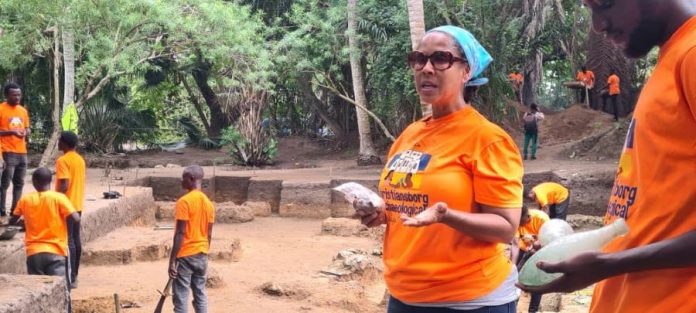It is often said that, a people who do not know where they are coming from, would certainly not know where they are going.
This saying is true for many especially people of the african descent, who as a result of cultural acculturation brought about by colonisation, have become oblivious of their true identity.
Culture is define as the way of life of a group of people, including their belief systems, patterns of behaviour and most importantly, the names the bear.
The Christiansborg Archaeological Heritage Project (CAHP) in Accra Ghana being spearheaded by Prof Rachel Ama Asaa Engmann is one such which was motivated by the desire to discover oneself through the legacies left by slavery.
CAHP studies the history and legacies of the transatlantic slave trade in the context of the Christiansborg Castle also known as the Osu Castle in Accra, Ghana.
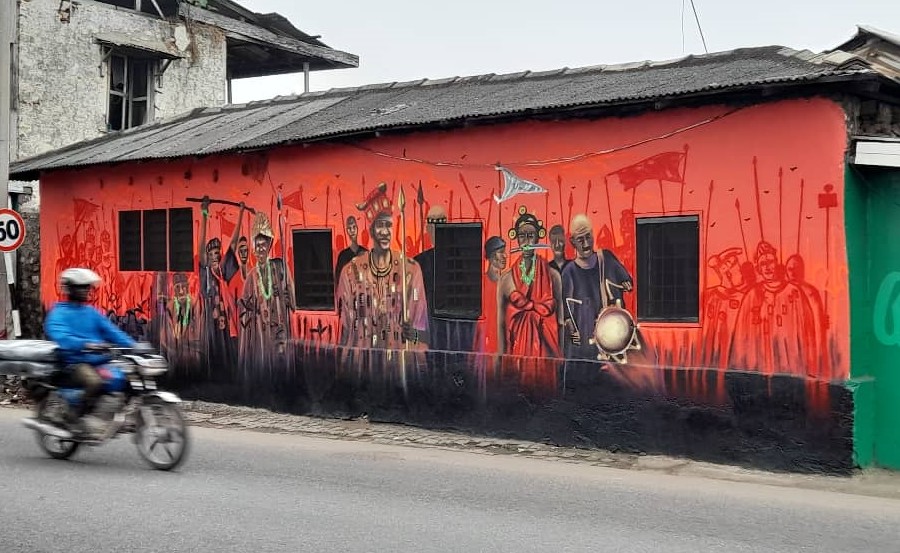
Professor Engmann a Ghanaian professor at the Stanford University in the United States of America was persuaded to undertake the project when she discovered why she bears a Danish name, Engmann which is inscribed on one of the cenotaphs at the Christiansborg castle at Osu in Accra Ghana.
Professor Rachel Ama Asaa Engmann discovered that she is a direct descendant of the then Danish Governor Cal Gustav Engmann who was championing the sale of captive slaves in the 17th century.
This revelation inspired her to further investigate and establish with concrete evidence the history of the indigenous inhabitants of the Osuland which is often told orally and sometimes distorted.
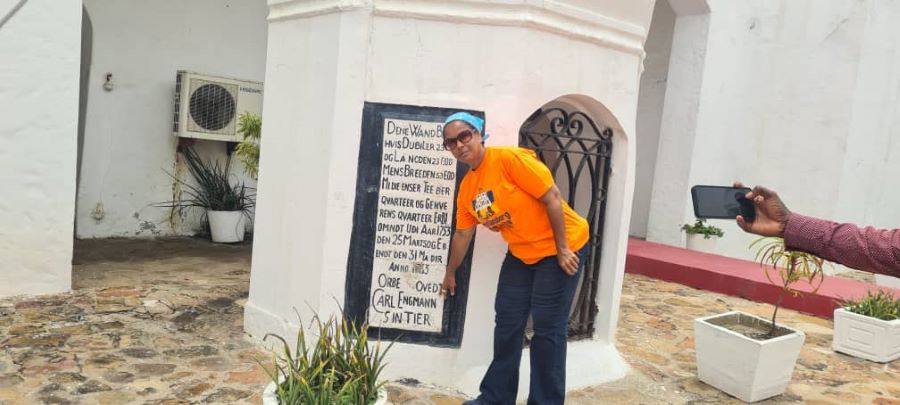
The Christiansborg Archaeological Heritage Project (CAHP) was thus birthed to help satisfy the curiosity of Prof Engmann and further enriched the history of Ghana, whose story is heavily impacted by the Transatlantic Slave Trade.
The project involves the digging of portions of the Christiansborg Castle for the discovery of historical artifacts that depicts the lifestyle of the earlier inhabitants of the area and juxtapose that to the current occupants of the land if there are any similarities among others.
According to Professor Engmann who the Director of Christiansborg Archaeological Heritage Project (CAHP), the initiative which started in 2014 is aimed at complimenting oral history as told about the people with verifiable artifacts.

Speaking to newsmen about the significance of the project, she indicated the excavation of the Archeological artifacts at the Osu Castle would go a long way to boost Ghana’s tourism sector due to their historical nature.
The ongoing excavation she said would not only help to re-write a country’s history through the discovery of artifacts of the remains of early occupants but also open up the country to tourists to know the historical journey of Ghana with the Danish, the Europeans and the British during the pre and the post-slave trade periods.
Prof Engmann expressed the hope that artifacts discovered would be part of items displayed at a national museum as part of government’s drive to convert the castle into a museum in a bid to preserve the rich Ghanaian heritage.
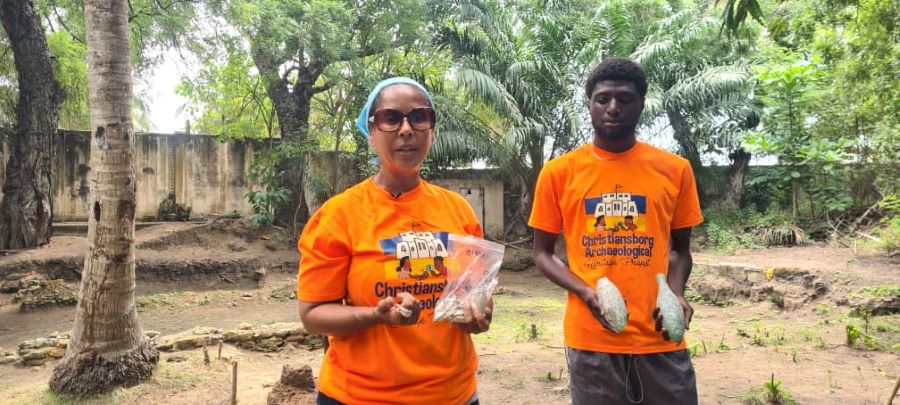
So far, some 180,000 artifacts including smoking pipes, ceramics, bottles and hoes have been discovered from the excavation.
The project is expected to help preserve Ghana’s cultural heritage with enhanced national unity whiles boosting the socio-economic development of the country.
The researcher said the CHAP initiative is in line with her archeological education and research in the sphere of heritages and tourism.
The team of researchers working with Prof Egmann include trained artists who specialised in artistic and descriptive paintings and photographic representation of the artifacts discovered and ways of life of the forebears in a quest to preserve and protect the cultural heritage of the people of Osu.
Most of these artists who have so far painted at least ten ancestral houses are descendants of notable names such as Randolph who was a famous historian, Victor Nanka-Bruce, a renowned physician, politician, and journalist who ever lived in the community as a result of historical occurrences.
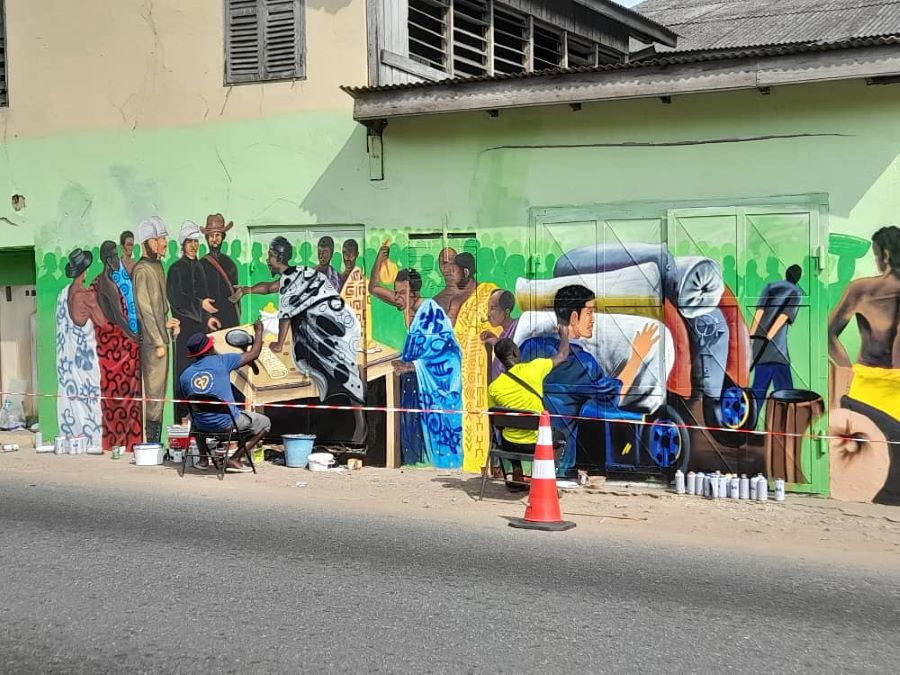
These paintings portrayed images of warriors, scholars, physicians, steel workers, fishermen and fishmongers, food vendors, and tailors, among others to tell their stories.
Residents around the project location are also involved in the initiative to create a community of ownership.
A Community Library has also been established under the project to provide children with general leaking and artistic skills.
The CAHP, she noted aims at providing rich information about artifacts found at the archaeological site at the Castle, which would be available to tourists who visit Ghana.
The CAHP Director urged government to invest in archaeological work to help provide documented insights into the country’s past.
The CAHP Project
The project is in its fifth stage of archaeological excavation and many artifacts have been found and profiled for further study while more are being unearthed.
Three thematic areas of the projec include; Auto-Archeology, Community Archeology, and Public Archeology.
Other artifacts also discovered included the foundation of what appeared to be a human settlement within the castle with different compartments such as a kitchen.
The rest are water bottles, beads, cowries, broken pots, presidential ceramic cups, and grinding tools.
Members of some indigenous families from Osu including the Joseph Wulff and Lutterodt families in an interview said they have gain much knowledge of their ancestral history and knowledge of archaeological work through the CAHP initiative.
Some of the trained artists, excavators and community members said the project has impacted their lives positively through employment and the curbing of some vices.
The project is being sponsored with a grant from the Mellon Foundation in New York, USA.
NR NEWS














